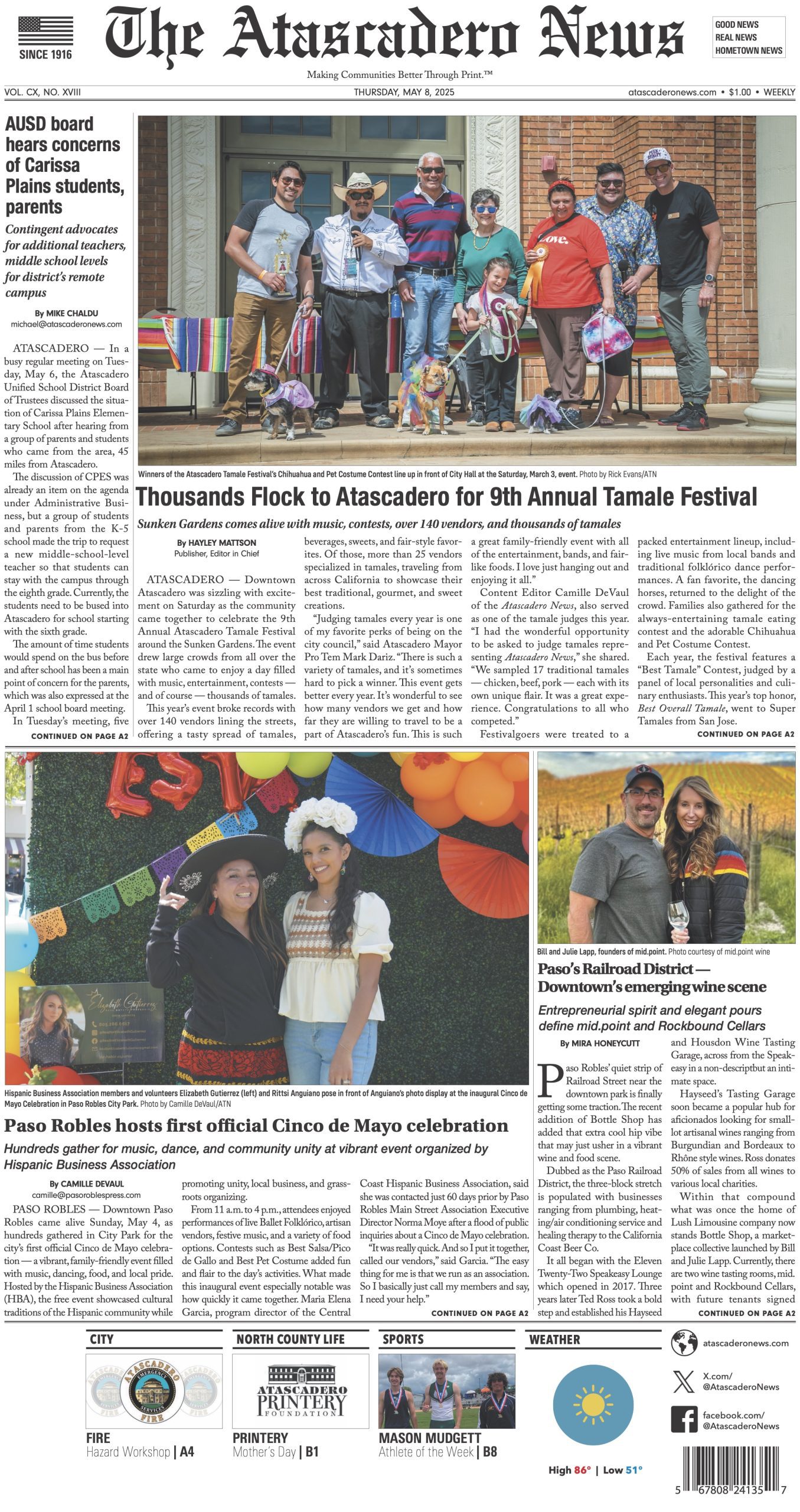County Still Getting to the Bottom of Water Issues
The San Luis Obispo County Board of Supervisors received an annual presentation of the Infrastructure and Facilities Five Year Capital Improvement Plan for all districts.
2019 marked the first year that the County received a significant amount of money from SB-1. Also known as the Gas Tax, the bill is strictly reserved for building and maintaining the California roadway infrastructure.
The majority of the funds were used to repair and repave O’Donovan Road near Creston. The approximate six miles of road also received improvements to drainage and was “enhanced” near the school area, according to the report. Other portions of the SB-1 funds were spent on Main Street in Templeton, and El Camino Real north of San Anselmo in Atascadero.
Other infrastructure projects completed were the replacement of the 75-year-old Air Park Bridge located between Pier Avenue and Mendel Drive in Oceano and the Bayridge Estates sewer line rehabilitation, which is the last collection system to be built on the new Los Osos sewer collection project. Additional information on ongoing and completed infrastructure projects can be found on the county website.
Board members continued their pursuit to find a comprehensive plan for water basin management. Courtney Howard from Water Resources Division of the Public Works Department and Rob Fitzroy, Deputy Director from Planning and Building, presented a feasibility study on fractured rock areas in the County. Not to be confused with fracking, these areas are where subterranean rock layers develop fissures that can and do hold water.
After the presentation, Supervisor Debbie Arnold chided the staff for not addressing the issue of groundwater and drilling first presented in 2015. Problems in the past have emerged when agricultural projects delve deeper into the earth to find water to support their needs. This deeper drilling poses a threat of contamination to high-quality aquifers. Arnold showed a clip of a 2015 SLO BoS meeting that discussed issues arising from agricultural businesses that were drilling through the Paso Robles aquifer into the Santa Margarita and Monterey formations as water levels dropped.
During the public comment section, multiple people spoke out against the lack of restrictions for new wells in Paso Robles, namely the Adelaide/West Side area where a plethora of vineyards has formed over the years.
The board unanimously passed a motion that instructed City staff to research the possibility of changing the County’s ministerial well permits issuance to a discretionary one and what criteria it would be based on as well as the legal restraints the County may face.












